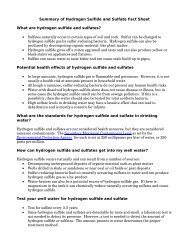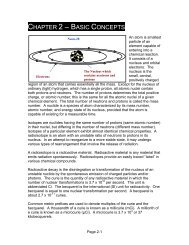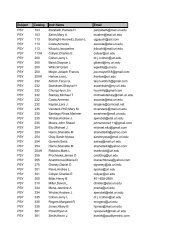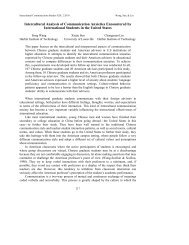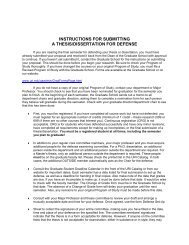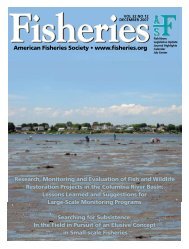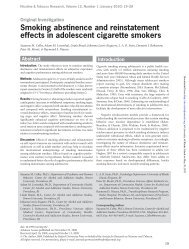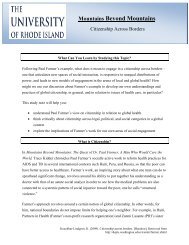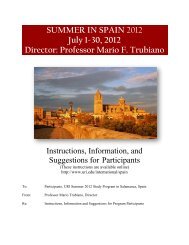Appendix A Standard Operating Procedures - University of Rhode ...
Appendix A Standard Operating Procedures - University of Rhode ...
Appendix A Standard Operating Procedures - University of Rhode ...
You also want an ePaper? Increase the reach of your titles
YUMPU automatically turns print PDFs into web optimized ePapers that Google loves.
5.3.3 Preparation - Day Before Sample Collection<br />
1. Make sure there is an adequate supply <strong>of</strong> sterile 1 mL, 10 mL and 25 mL pipettes and<br />
PBS filled sterile squirt bottles AS WELL AS FILTER ASSEMBLIES. If not, autoclave<br />
them.<br />
a. Pipettes are sterilized in the pipette pouches that are laid on an autoclavable<br />
tray.<br />
b. Squirt bottles are sterilized empty, with foil over the squirt caps. Caps should<br />
only be loosely placed in the bottle. Bottles should be placed on an autoclavable<br />
tray when placed into the autoclave. Once cooled, sterile squirt bottles can be<br />
filled with cool sterile PBS (refer to SOP 004 – General Autoclave Operation).<br />
c. Filter assemblies are sterilized in autoclavable bags that are laid on an<br />
autoclavable tray.<br />
2. Create data sheets from the template found on the WW computers. It is very helpful to<br />
include any known dilution information on the data sheet. An example data sheet is<br />
located in Section 8.0 Documentation.<br />
3. Prepare the TSB tube for the positive plate using the procedure outlined in Section<br />
5.2.4.1.<br />
5.3.4 Procedure - Day <strong>of</strong> Sample Collection<br />
5.3.4.1 Initial Preparation<br />
1. Take the appropriate number <strong>of</strong> mTEC media plates out <strong>of</strong> the fridge so that they can<br />
begin to warm up a little. Allowing the media plates to come to room temperature<br />
reduces condensation and ensures that the labels will not rub <strong>of</strong>f.<br />
2. Wipe down the bench in room 019 with Envirocide or Conflict; allow the bench tops to<br />
dry.<br />
3. Connect the side arm flasks to the vacuum manifold.<br />
4. Set up the alcohol lamp, beaker with alcohol and filter forceps, membrane filters, Sharpie<br />
marker, PBS squirt bottle, etc.<br />
5. Remember to use basic hygienic practices when handling samples. Latex gloves,<br />
laboratory coats and eye protection are required.<br />
5.3.4.2 When Samples Arrive At The Laboratory<br />
1. After logging in samples, store them in a cooler with ice packs or the refrigerator located<br />
in room 019.<br />
2. Sterilize the filter funnels and filtration bases in the UV box for at least two minutes.<br />
a. The cardboard has to be over the button in order for the unit to turn on when the<br />
door is closed.<br />
b. The latch must be engaged to keep the door closed. Peek in the side to be sure<br />
it is on – don’t stare at the light!<br />
3. Retrieve samples in batches <strong>of</strong> 4 from the cooler.<br />
4. Label the bottom (half holding the media) <strong>of</strong> mTEC media plates with the Sharpie. The<br />
label should include all the information present on the sample bottle, as well as any<br />
necessary sample dilution information.<br />
13 <strong>of</strong> 23<br />
Ambient Waters Microbiological Procedure SOP 007<br />
S:\WW\awwword\LABPROC\all QAPPs\LABQAPPs\QAPP Rev5 -0609\SOPs\SOP 007AmbientMicrobes.doc



